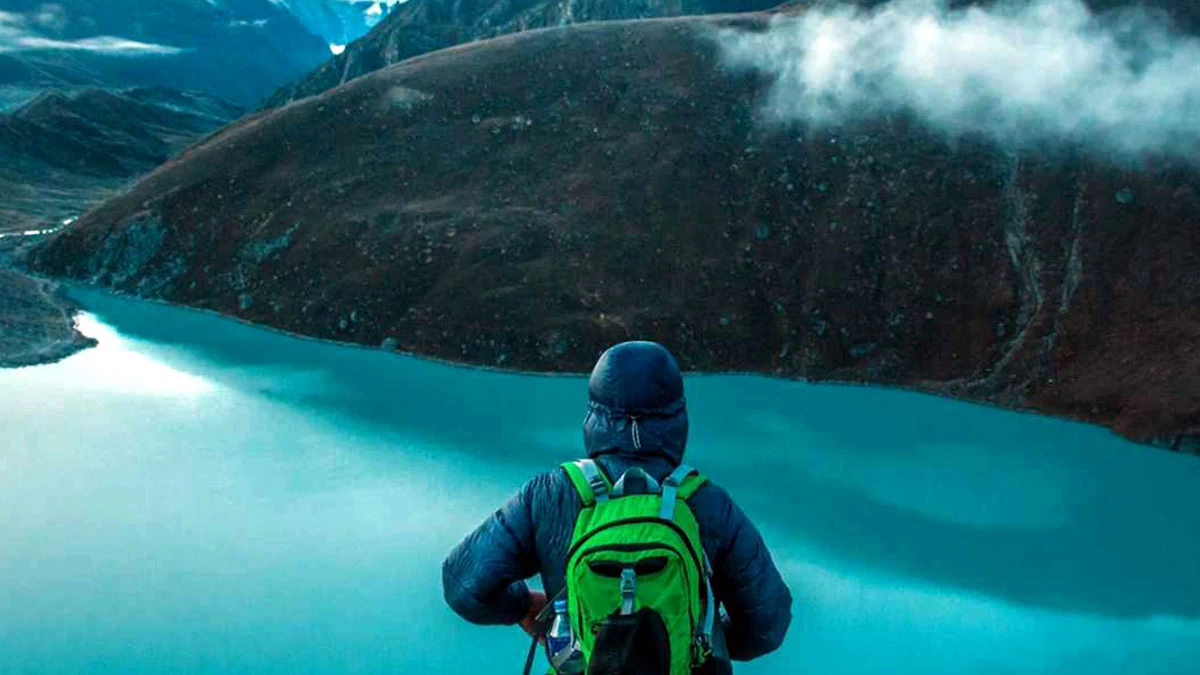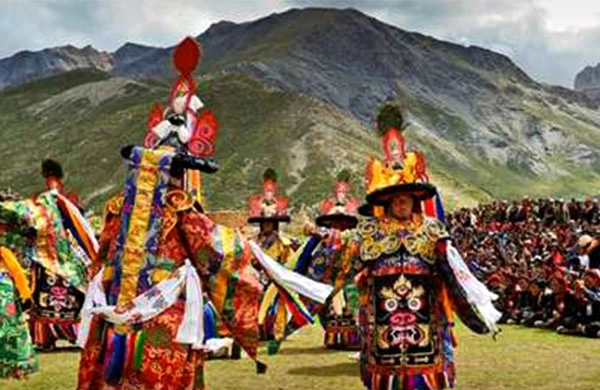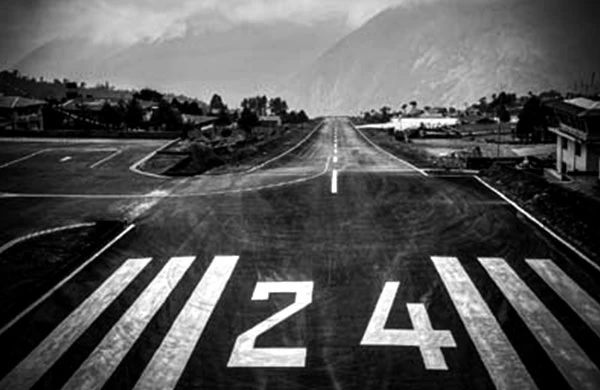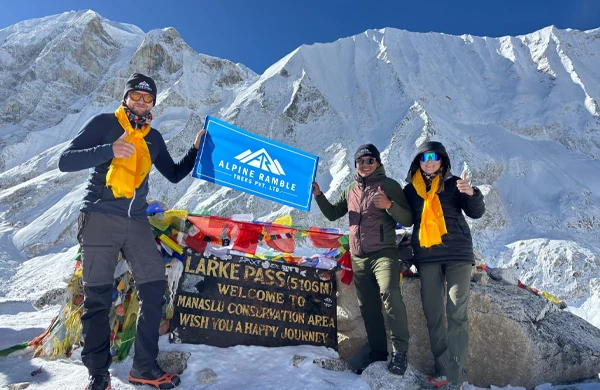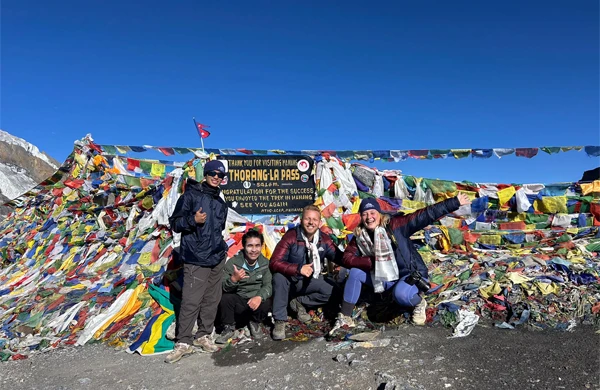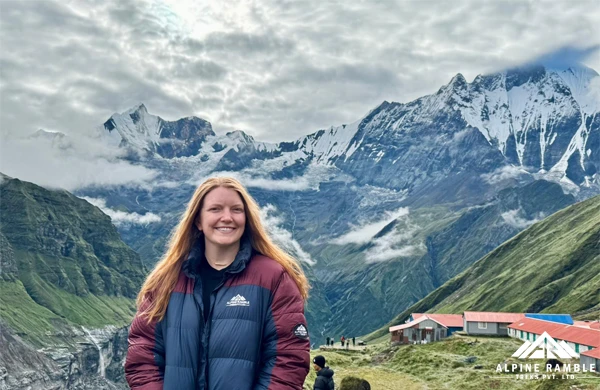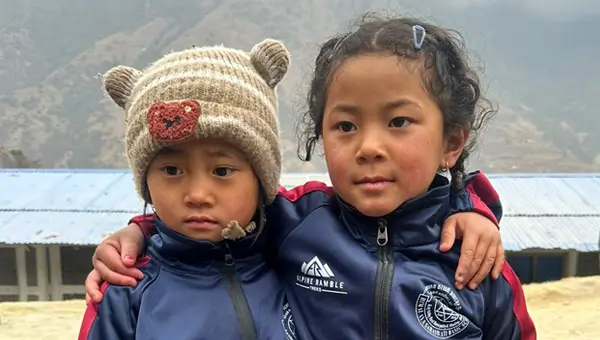What to pack for a successful hiking trip to Everest?
Are you wondering what to pack for your upcoming hiking trip? Here are the solutions of the packing list for hikers to be prepared for your next trip to Everest Base camp!
A packing list for hiking is an absolutely essential part of a trip, especially if you are doing a multiple-day hike into the Himalayas like Everest. Hiking to Everest Base Camp is itself an amazing experience.
As it takes us to the most ravishing part of the Himalayas, it's a paradise for trekkers. Standing at the base camp of the world's highest Mount Everest has become an epic trend since it's first submitted by Tenzing Norgay Sherpa and Sir Admin Hillary in 1953.
This route is incontrovertibly one of the most popular treks in the world and yet it’s been an ultimate hiking destination to all of the adventure enthusiasts.
If you have been dreaming and wishing to hike into the Base camp of the world’s highest mountain, Everest then prepare your backpack more effectively for a successful trek to EBC, it is always sensible to make a checklist of essential items for a successful trip to the Himalayas.
Backpacking trips to the Himalayas especially at higher altitudes will help untwist the unbroken pressure of always being handy for all.
Pack as light as possible for a successful hike
Hiking is always a fun activity for human life whether you go on your own or plan with your travel mates.
It is conceivably the greatest way to honor and enjoy life in a moment full of joy and happiness from a hectic life.
As we articulate, nature heals people and that brings the best of you even when you aren’t ready for it.
If Everest base camp trek has been on your bucket list and getting started of preparation for this trip there you have come to the right place.
In this article, we are going to share a complete packing list for a trip to Everest Base Camp, please kindly go through the list below.
The more you are prepared, the more you are confident and you will enjoy your journey to this magical land of the magnificent Himalayas!
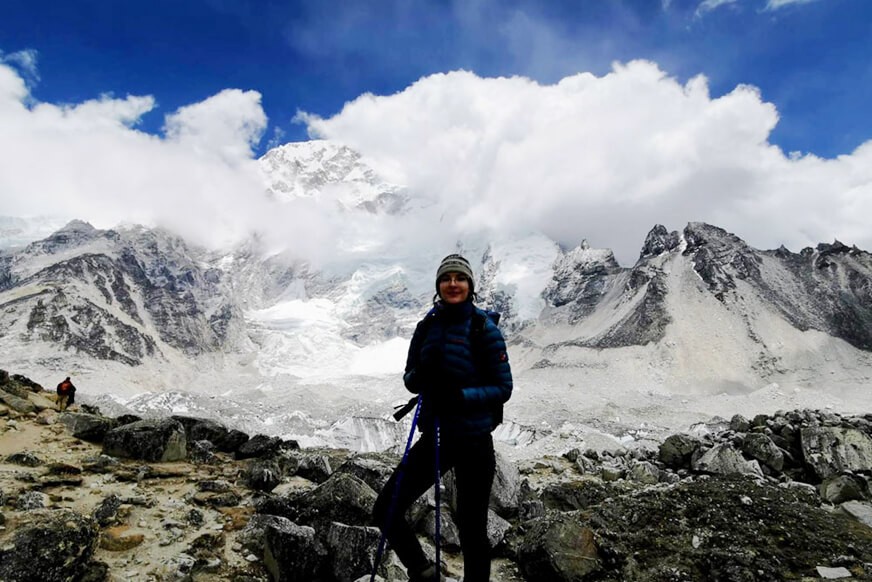
ACCESSORIES
Gloves
Gloves are an essential part of the packing lists; they should be warm with water and windproof. It is used while trekking at the altitudes to protect your hands and fingers from the cold and there are no chances to get frostbite if you wear a good pair of gloves on the mountains. Take at least 2 pairs of hand gloves one for warmer and another pair for liners to keep your fingers extra warmer. It’s definitely much needed. The lightweight wool or fleece gloves, and lightweight poly-liner gloves are advisable.
Headwear
Make sure to bring all the essential Headwears as mentioned below, you may add some particular list if those are not shown in this list.
-
A warm Beanie (The temperatures in the evening and morning can increase dramatically in the Everest region of the Himalayas, so having a warm Beanie will help prevent freezing your head)
-
The headband (It’s very useful for female travelers to wrap up their hair while trekking
-
Remedy Sunglasses or Goggle : (It’s very important for hiking to Everest that protects your eyes both from the too-brightly snow and harsh sun in the mountains, also sometimes you will face massive gusts of wind, so sunglass can protect your eyes from all of them. Invest in some polarised sunglasses to make the lakes look even bluer! These sunglasses claim to be unbreakable, which sounds like a challenge during the trek in the Himalayas!)
- Headlamp with extra batteries and bulbs
-
A cap for the protection of the sun (The sun is very fierce at high altitudes in the Everest region of the Himalayas, so having a sun hat will stop your face from frying and help prevent overheating
List of Clothing
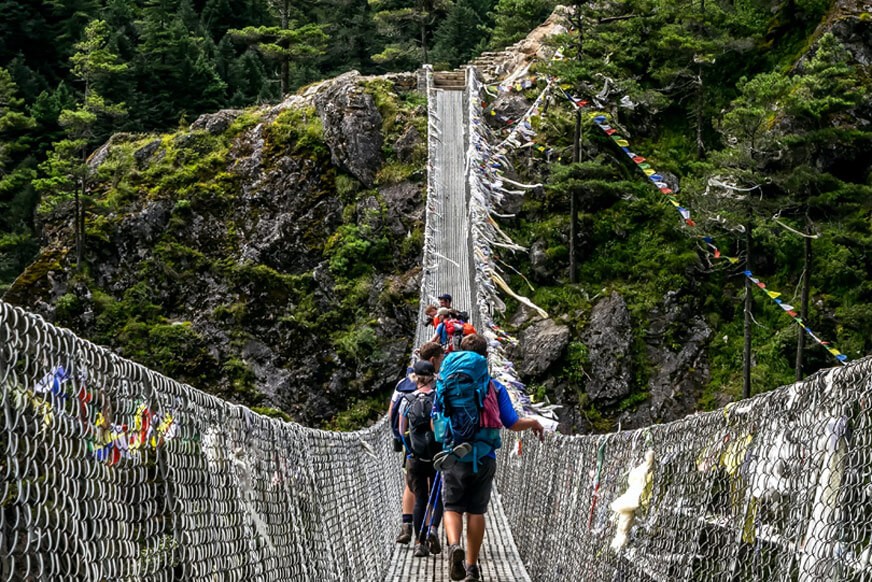
Base-Layer (Upper, Inner, and Bottom): The layers are important because those base layers are to keep your buddy warm in cold temperatures at higher elevations. Trekkers are required to carry some quick-drying, breathable, and waterproof layers for the trek.
There are different kinds of layers that can be found with full and a half or short types of layers in the hiking stores, make sure to carry both half and full layers versions that you can keep changing.
The wool or fleece fabrics are the most used and comfortable materials for the high-altitude treks in NEPAL. And they are warmer too! We can use them while sleeping or blankets in the tea house. The base layer (top) with a hood is favored.
Bring some warmer layers including Thermal for an inner buddy for the upper and bottom parts.
Hiking trousers or Pants (Gore-Tex): Gore-Tex or any of brands are recommended for hiking trousers. You can have at least 2 pairs of hiking pants (Folding paints if possible, the North Face, Sonam, Kathmandu brands are recommended.
Make sure the pants are comfortable with good sizes and lighter for hiking. The trekking pants must be light, foldable (if you prefer to make a short ), washable, and quick-drying. And they prove to be handy during the rainy days.
Fleece Pant
Fleece pants are good for your time in lodges or tea houses after the trek. We recommend bringing a pair of warm fleece and comfortable track pants to change upon arrival at tea the house.
Fleece Winds topper jacket: Fleece Winds topper and hiking pants are needed to keep you warm in the camp especially for the evening and morning as temperatures decrease at altitude. These items are so useful that you can wear them after arriving at the camp. It is preferred to wear during the time of our stay at the tea houses or lodges or while sleeping at the camp.
Normal T-shirts or Top Thermal: At least 3 -4 lighter upper Thermal or any normal hiking t-shirts to bring to wear while trekking in the lower and upper region of the trek in Everest. You can get half and full Thermal or normal t-shirts, bring both of them maybe 2 half and 2 full thermal that you can use in the lower and higher altitude equally. However, the normal hiking t-shirt and Thermal are washable so you can wash these T-shirts on the trail.
Undergarments brief: Normally non-cotton undergarments are recommended for hiking but you can bring any of them as per your personal preferences. Make sure to carry a sufficient number of undergarments for the multiple-day hike to Everest base camp. Remember, you can also wash and reuse them on a trail.
Down Jacket: Down Jacket is one of the most needed packing lists for the Everest Base Camp trek. It must be worked for at least – 20 degrees Celsius at the high altitude of the Himalayas.
The night is usually extreme cold that can go under negative degree C of 15-25 during the higher region of the Everest base camp trek. The down jacket keeps you warm and is easy to carry since the weight is not heavy and easy to carry that can be fit into a compressed bag. A good quality hooded down-jacket like North Face or any other brands as per preference is needed.

Fleece Jacket and Down Vest: Fleece jacket is very useful which will keep you warm during the cold temperatures of the mountains. You need to use it during the time at tea houses or lodges, and even while sleeping.
Make sure to buy a fleece jacket with hoods. And the down vest is to use while trekking to the lower part of the Everest base camp trek. It is suggested to carry a few pair that makes your hike comfortable on rolling and support you a lot.
For Sleeping Accessories
Everest base camp trek is a well-established trekking route with the tea house or trekking lodges along the trail, you do not need to bring a tent for this trekking trip. But make sure, the tea houses only provide blankets and that would not be sufficient for the cold temperatures at higher points of the Everest region, so make sure to bring a good and warmer Sleeping Bag: It must cover at least 20-25 degrees range of temperatures during the trek.
The tea houses provide blankets on the trail but adding a sleeping bag to it can get warm enough in the mountains. Optimally, you can also carry a fleece sleeping bag liner which will keep you warm even on the coldest night in the mountain.
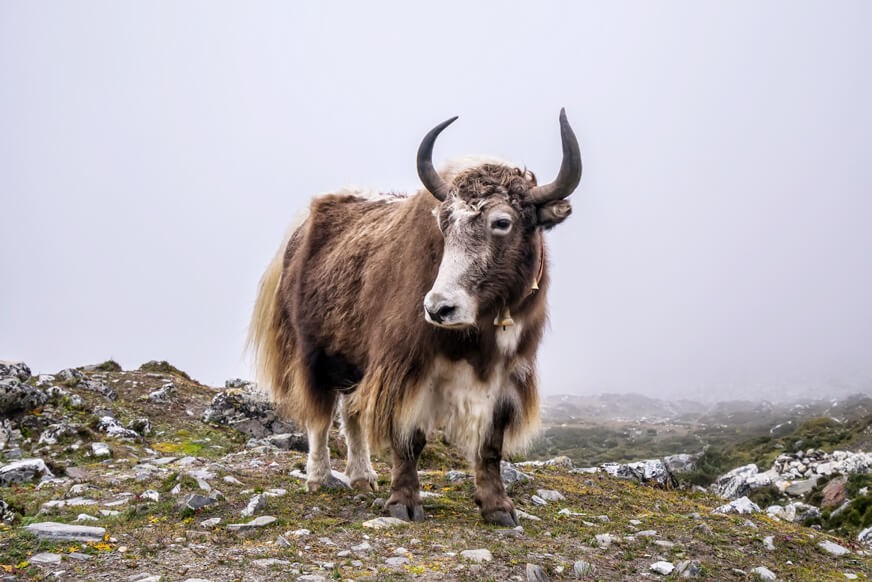
FOOTWEAR
Can we imagine hiking without boots? No way, especially for Everest base camp, it's impossible. During the Everest base camp trek, we will have to walk through the rugged terrains, glaciers, rivers, jungle terraced fields, and walk on snow in the region. Hence, a comfortable pair of shoes is a must for this trek. Waterproof shoes are suggested, you can buy any brand as per your preference but make sure a good pair of shoes with comfortable socks fit you.
Hiking socks and Gaiters
Purchase a few pairs of thermal light and breathable socks. Thermal Heated Winter Socks Insulated for Cold Weathers during the trek in Everest. These Socks are perfect and suitable for hiking that will prevent blisters and keep your toes fresh and warm. And, another thing is Gaiters; it is very helpful and supportive for your pants and shoes to protect from the water and mud, small rocks, and snow during the trek. It covers all from the ankle to the calf. Bring a pair of gaiters if possible that won’t disappoint you.
Sandals or Flip-Flops
Carrying a pair of sandals or flip-flops will be very helpful for your time in the tea house and trekking lodges, it is necessary during your stay behind the hiking scene, Especially for showering or bathroom time in the lodges. You will never find good sizes of local sandals or flip-flops in the local teahouse if you do not bring your own.
Trekking Poles
As we climb through the rocky trail, glaciers en route to Everest Base Camp trek could be a challenging part of the trek; in this case, the trekking or walking poles can play a vital role for you. As we called, the trekking poles will be our third leg during the trek to the Khumbu region of Nepal. Hence, we advocate you bring a trekking pole with you from home or you can buy any brand in Kathmandu trekking stores.
Day Backpack
Daypack for Everest base camp trek is essential. In your small daypack, you can pack to carry your daily personal valuable items and important documents such as a camera, money wallet, passport, cell phone, quick-changing clothing, rain poncho, some energy bars, drinking water, etc. We recommend having a 40 liter or above waterproof backpack for your next trip to Everest base camp.
Water Bottle
Water is one of the most important factors of life; we need to keep drinking even if we are not hiking. However, water in hiking is a must.We recommend you bring two Nalgene or similar types of water bottles where you can fill the water all the time during your Everest base camp trek. Drinking 3-4 liters of water is the best, we recommend you to drink plenty of water or as much as you can, carrying a bottle with you will give a constant reminder for you to stay hydrated and energized. In the mountains, people say, water is oxygen. So we can imagine how important it could be for hiking to higher altitudes.
Toiletries
- Some small shampoo for your hair wash
- Toothpaste & toothbrush
- Soaps
- Nail cutters, and a small mirror
- Towel and toilet paper
- Face and body moisturizer
- Sunscreen: (SPF 50 +) this sunscreen is free of nasty chemicals!
- Some Lip balm
- Some Female hygiene items
- Toothbrush and toothpaste
- Floss, Deodorant
- Hand sanitizer
- Carmex or another lip slave
- Face wash, in a small container
ELECTRONICS
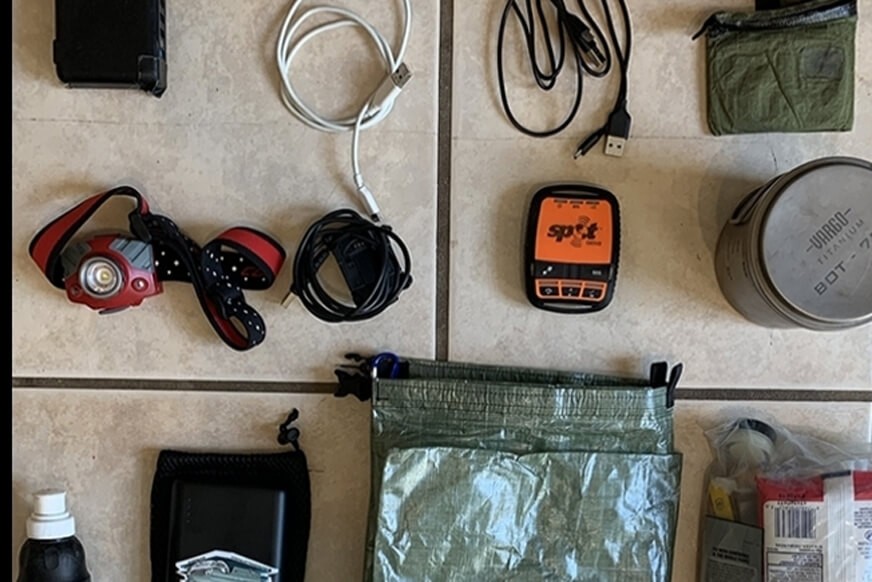
- Camera: any company or bran as per your preference (Wide angle lens – to capture all the beautiful mountain vistas)
- SD Cards for the Camera– you need to buy at least 16 GB or more SD cards to store all of the pictures during the Everest base camp trek
- Some Spare batteries and chargers
- Head torchor headlamp: during the early hike we need to have a headlamp, especially for our hike to Kalapathar that starts very early in the morning.
- Cell Phone – any kind of phone that you can use for this trek. Remember, in Everest, there are wifi internet services at the tea houses along the way but no local sim access in some places.
- Power bank – another essential item for the trial especially if your phone has a pathetic battery life like mine!
Rain gear and quick-drying layers
Weather in the Himalayas is always as unpredictable as a mood swing. So we can never be sure of the weather forecasts, especially in the mountains region of Nepal. Hence, it is better to hike with essential gears where a versatile, lightweight, and breathable rain jacket is the savior.
First-aid Kit
Since we are going on a multiple-day hike in the mountains, of course, we need to be extra prepared, and having a basic first aid kit is a requisite. For the Everest base camp trek, we recommend you to take some Diamox tablets for High altitude sickness, Paracetamols, Gel for legs and body pain, and bandages. Also add on your specific needs, whether that’s a prescribed medication, Odomus, Pepto Bismol, or just some extra Band-Aids.
Travel Documents
- International Airline tickets
- Nepal Visa form (may On arrival visa obtained upon arrival day at Kathmandu Airport)
- Travel Insurance Policy
- Valid passport (6 months older the time you enter Nepal)
- Photos of passport (2 photos )
If travelers looking for different treks than Everest in Nepal, you can expect to purchase the same trekking gear as mentioned above for trekking trips to the Langtang, Annapurna, Manaslu, or any other trekking trails in Nepal Himalayas, you can buy the same thing.

